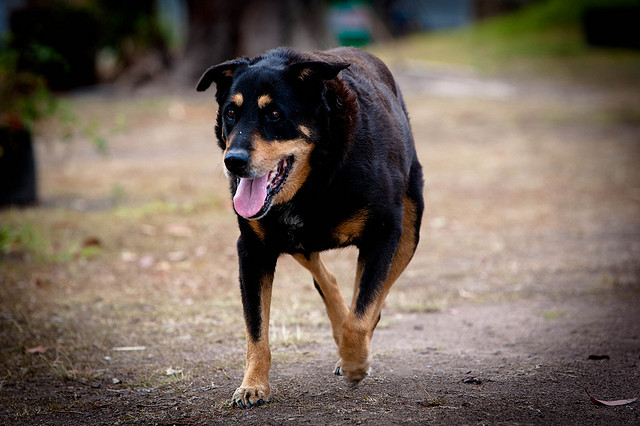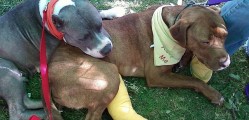You pay attention to how much you eat, what you put in your body and how healthy you are, so why not do it for your pet? The Association for Pet Obesity Prevention releases a survey in which they found that 53% of dogs are overweight. This leads to health issues and cause arthritis as well. Dogs are naturally pretty lean so it is important that you make sure they get a healthy diet and exercise.
As always check with your vet before putting them on a diet in case they have any special nutrition needs.
Have you ever put your pet on a diet? How did that work out and how did you do it?
Check out some more info on what their calorie intake should be and a few exercise ideas:
Another important part of maintaining your pet’s weight is knowing how many daily calories it is consuming. Accurate measurement of the pet’s food is essential. Nelson says a recommendation of one 8-ounce cup of food is not equivalent to using a Big Gulp drink cup — it means using an actual measuring cup. If you can’t find the calorie recommendation on the bag label, contact the manufacturer to get this information.
“I think it’s important to realize that food does not equal love,” Nelson said. “It’s hard to resist those big, brown eyes, but those extra calories can really add up.”
The amount of calories per cup can vary tremendously between different brands and types of food by as much as 200 to 300 calories per cup. You can easily double the amount of daily calories consumed by your pet if you don’t adjust the amount you feed when you unknowingly switch from a lower-calorie food to a higher-calorie food. Also, Nelson says the feeding guides on the bags may not always be ideal for your pet.
“In the testing facilities, these animals are typically mandated to have a certain amount of exercise per day because they are research animals,” Nelson said. “In reality, a lot of the pets that we own don’t get as much exercise as those dogs and cats in the research facilities.”
It can be tough to not give your pet any treats, but try to substitute extra pettings and attention instead of extra calories. If you can’t entirely give up on the treats, try switching to lower-calorie treats, such as veggies, and limit the total calories from treats to no more than 10 percent of you pet’s daily allotted caloric intake.
Nelson says you should exercise your pet at least 20 to 30 minutes everyday, if the pet’s health allows. A pet that lies around most of the day takes very few calories to meet its daily requirements, which makes it hard to lose weight. Exercise will increase its metabolic rate and burn more calories. Most people often find it easier to exercise a dog than a cat.
“You can try scattering the food around in small portions throughout the house so that they have to hunt for it and get more exercise that way or you can place the food in a location where the cat has to go up and down stairs,” Nelson said. “There are also items call food puzzles that you fill with food and the pet needs to work at it to slowly retrieve the kibble.”





Leave a Reply